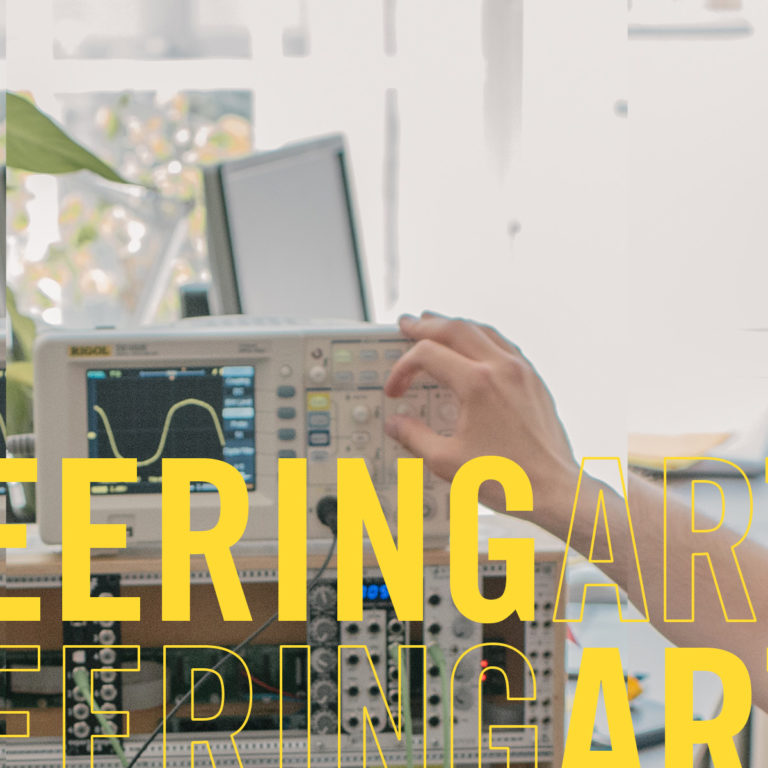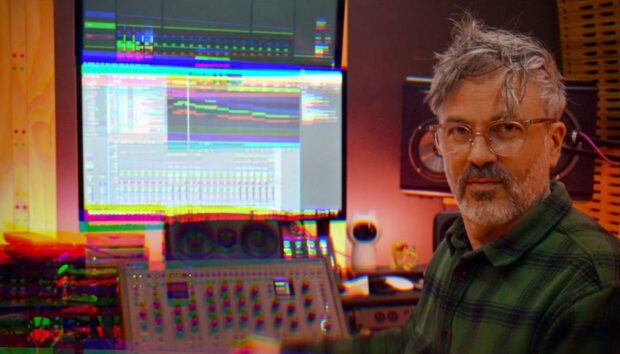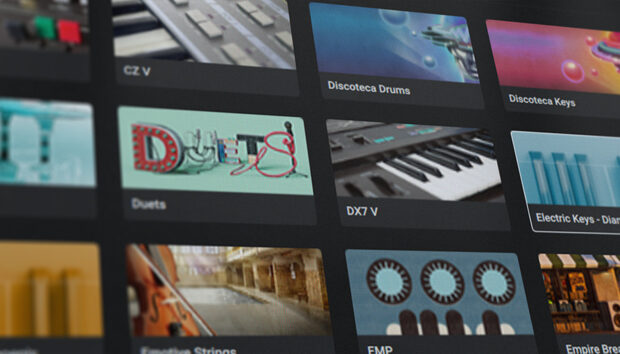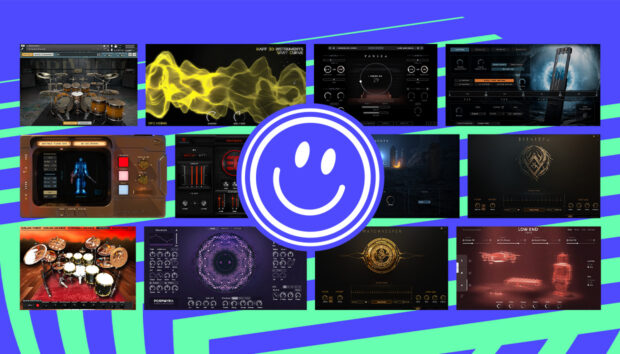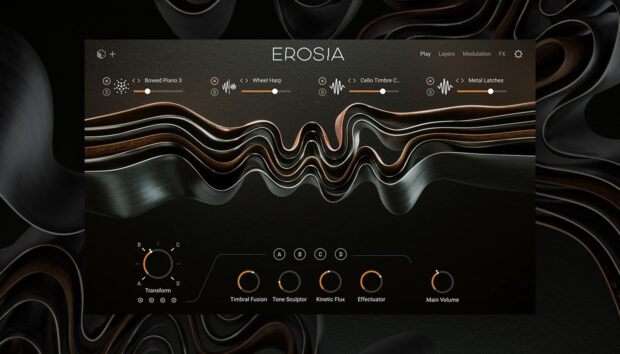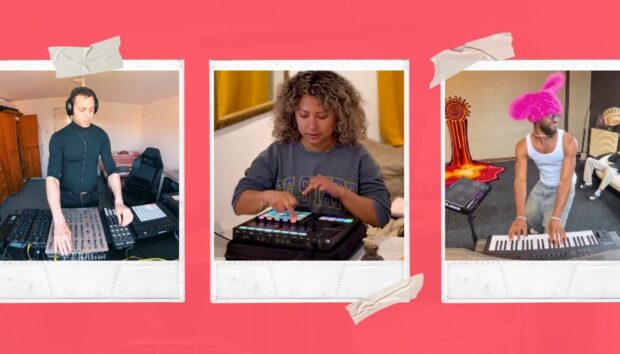It’s ten years since Native Instruments launched its flagship beat-making instrument MASCHINE. As part of our rewind through the last decade, we’re meeting key players at the company who’ve helped make MASCHINE something special, inspiring music-makers all over the world today.
Some features grab headlines. Others find favor simply because they sound so good. In this series, we’re taking a closer look at some of those under-celebrated, fan-favorite features – finding out the stories behind them, and getting to know the people who made them.
In this installment of Engineering Artistry, we’re talking space. Not the galactic kind, but one of the most fundamental elements in sound: Reverb.
Space is the speciality of Dr Julian Parker. Today he’s the Principal Software Engineer for DSP at Native Instruments. His hands have been in some of our most popular space-oriented effects, including REPLIKA and REPLIKA XT. And along with Steinunn Arnardottir, who we also caught up with, Julian’s responsible for creating a large part of MASCHINE’s reverb plug-in. As we’ll explore, it’s a labor of love that’s resulted in an exceptional effect – far surpassing usual stock-plug-in standards.
Along with finding out what goes into a great-sounding reverb, we wanted to hear the story of the man behind it – and get some reflections of his own.
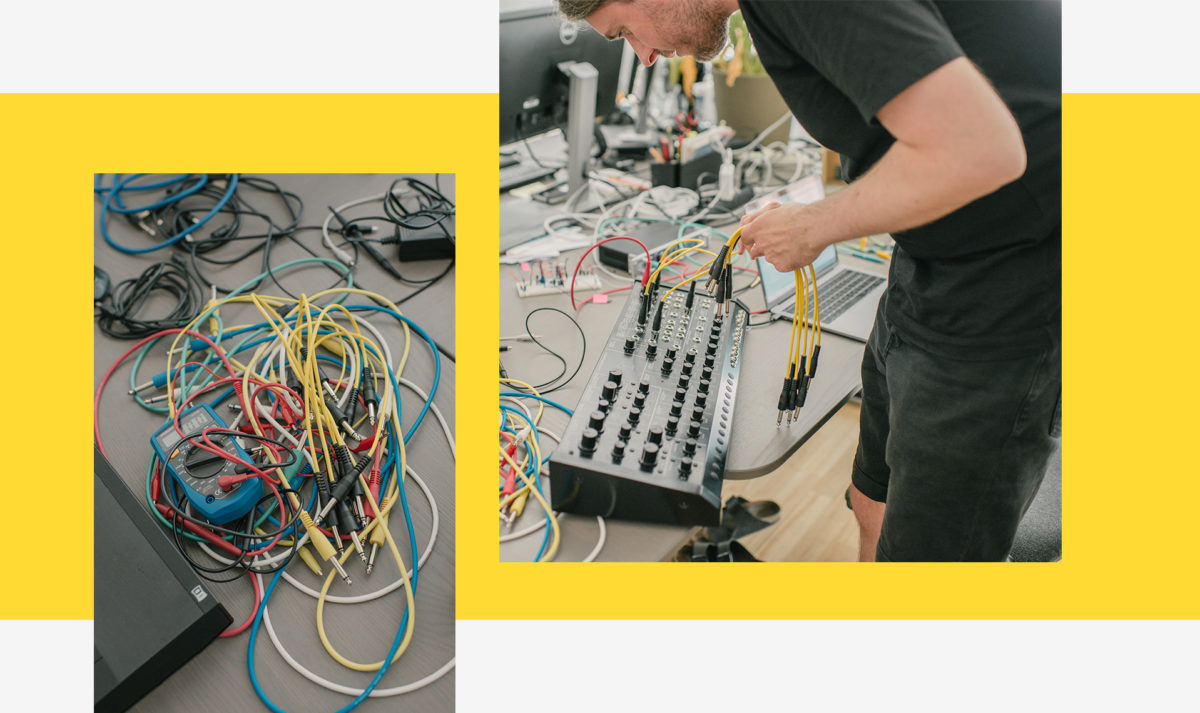
For most of us, our earliest experience of reverb might be walking through a big, echoey space like a tunnel. We shout, scream, clap, and the sound booms around us. To a child, it’s irresistible. As Julian recounts his early memories of sound, it’s apparent this childlike curiosity of shouting in tunnels might’ve sparked his career. “I remember going to the Lake District with my family when I was about eight or nine,” Julian starts. “We were in a valley in the middle of nowhere, and it was super quiet – you couldn’t hear anything apart from the occasional sheep. I discovered that you would get this big reflection off the opposite side of the valley. When I clapped, I’d get this amazing echo – I remember shouting and playing with that for a while.”
It’s those early memories of sound and music that influence us later, and Julian has plenty of them. “My dad had a reel-to-reel tape recorder, and we’d play around with it together,” he adds. “We’d record stuff on there and play it backwards or slow it down and mess around with the tape.”
“Then my dad didn’t want the reel-to-reel anymore, so I took it over and started doing some weird stuff with it. I also had a ZX Spectrum; it was a kind of old, crappy computer at the time. Everyone else had a SNES or Amiga or whatever, but I had my Spectrum. You could do cool stuff with it like programming bits of BASIC. It would make sounds that I could record onto the tape and then do all kinds of weird stuff.”
“Finally got my first synth when I was 16 after I’d saved up from a Saturday job. I realized that I could look in the local ads paper, and I’d spot stuff that people were selling at less than it was worth. Then I’d buy it and then flip it to someone else for more money. After a while, I managed to get quite a nice collection of music gear without spending much at all.”
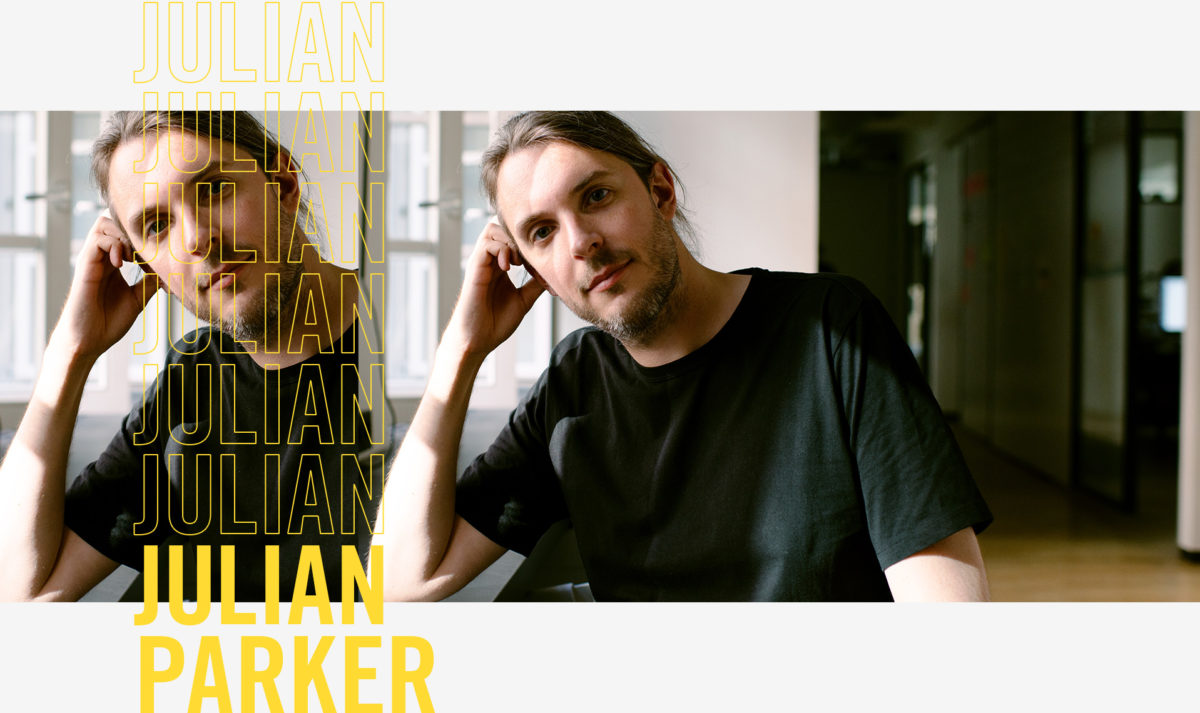
After finishing school, Julian landed a place at Cambridge University to study physics and natural sciences. That meant music had to take a backseat – for now. “At this point, it seemed like the sound and the music stuff was more of a hobby. I studied physics, then astrophysics. But I didn’t want a career in academia, and that’s pretty much the only option in this field.”
It wasn’t until later that Julian was able to combine his two passions through an innovative Master’s program at Edinburgh University. “I decided that I wanted to try and combine the stuff that I’d learned in physics with my interest in sound and music. So, I got onto this Master’s course in Edinburgh – a few others from Native did this course. It was a great course because it was music, tech, and acoustics for people from a physics background. But also 50% of the course could be sound design and stuff like that if you wanted. It was very interdisciplinary – super technical but also quite creative.”
“I wrote my thesis on spring reverb, which nobody had looked at much before. After that, I ended up doing a Ph.D. in Helsinki, Finland. The professor took an interest in what I’d done with the spring reverb topic, and I ended up staying there for over four years.”
By the time he’d completed his Ph.D., Julian had already met many of his future colleagues. It didn’t take long for an opportunity to open up at Native, and once there, some of his early projects included overhauling MASCHINE’s limiter with a new Transparent mode. It was after this that he was draughted in to create a beautiful new reverb for MASCHINE.
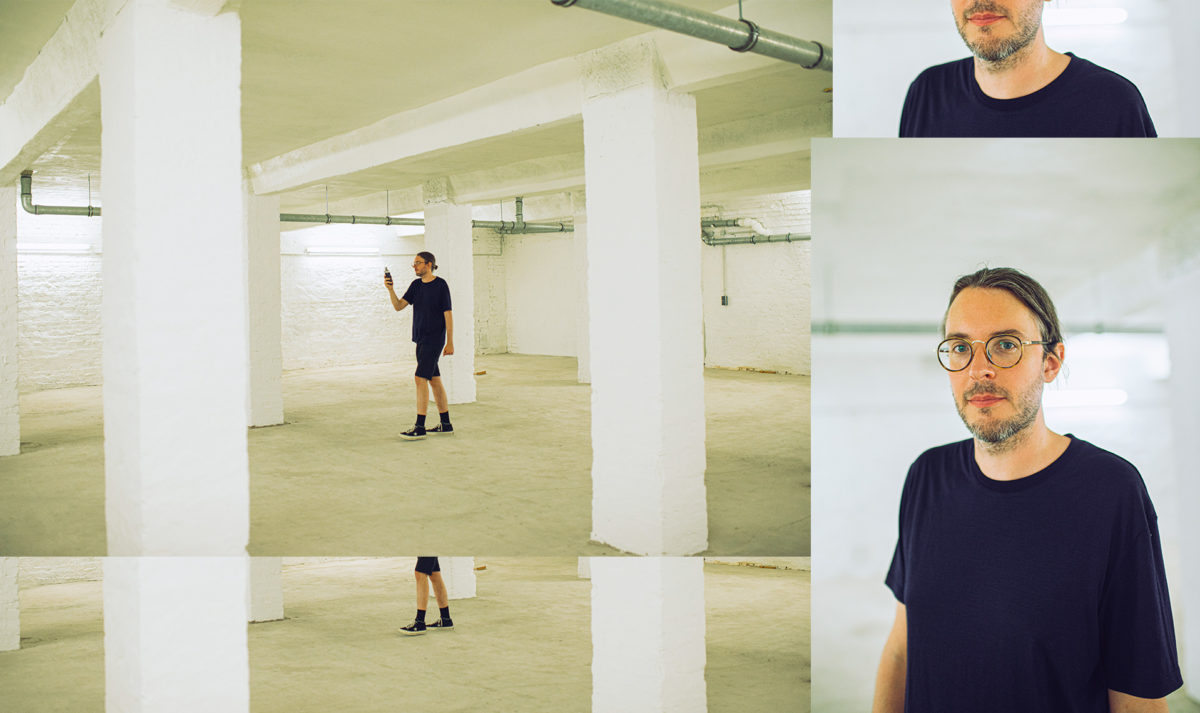
“The Maschine reverb came out of a user request – the old one was a bit lo-fi. Steinunn Arnardottir had already made a plate reverb, and they asked me to do more. So I thought, right, I’m going to make this as lush as I possible! The initial idea was that it was going to be specially for drums – that’s how the Room mode came about.”
A good room reverb is a key to fatter sounding drums. It can add extra weight and density to kicks, snares, and snaps while helping them to sit in your mix. It’s this that Julian had in mind when he designed the Room reverb for MASCHINE. “I thought about that and what makes a reverb sound good on drums. I concluded that it was about having a quick build-up of echoes – a fast onset and then lots of density so that it cracks a little bit.
Unconvinced by the conventional methods for designing reverbs, Julian set about creating a technique of his own. “One of the standard techniques is called a feedback delay network, where you have lots of delay lines in parallel, and then they’re mixed and fed back to the input through a matrix. Most people use this particular kind of matrix because it’s what it says in the papers from 20 years ago, but I realized that this sucked. This meant that you were actually getting less density out of the reverb than you could.”
“I worked out a new way of replacing this matrix with another thing which would get you much, much higher density. I spent ages and ages choosing delay times – reverb is so fucking hard!”
While the Room mode is perfect for shorter, more percussive sounds, the Hall mode creates bigger, lusher spaces. “Some vintage reverbs have something special to their sound because of the modulation that’s added internally,” he explains. “It’s there to make it sound smoother, and it ends up with a kind of warmth and lushness in the tail. I’ve always loved that sound.”
“For the Hall mode, I tried to make it a lot more sparse and spacious in that initial splash as it then it ramps up into a smooth tail. The reason for that is because, for melodic stuff, you want to leave the attack of the note as untouched as possible so that it doesn’t get muddy.”
“There’s a control called ‘softness’ which ramps the thing backwards. The idea was that this mode would do what traditional hall reverbs do, which is to reinforce the body of a sound and make it sound longer than it is.”
People often say that the reason they love MASCHINE is that it just sounds good. Since reverb is such an essential ingredient in music, this particular reverb might go some way to explaining that goodness. “In some ways, a nice reverb is the cheapest production trick in the book – you can whack it on everything and it’ll sound good.”
“People connect with reverbs, I think, in a way that they don’t necessarily do with other effects,” Julian adds – and that’s true. Reverb connects on an emotional level, transporting us to sonically-crafted spaces that feel as real and intriguing as that echoey church, spooky tunnel, or atmospheric lake that first captivated us as children.
Want to learn more about reverb and its uses? Check out these top five videos for using reverb in practice: https://blog.native-instruments.com/reverb-in-practice-top-5-videos/
10 years of MASCHINE
From artist stories and engineering tales to hardware makeovers and birthday freebies, join us as we celebrate ten years in style. Plus, stay tuned as we reveal what’s next for the MASCHINE software. We’ll be speaking to the developers working hard to bring about the features you’ve been asking for.
To see what’s new, head to the ten years of MASCHINE page.
Photo credits: Kasia Zacharko








